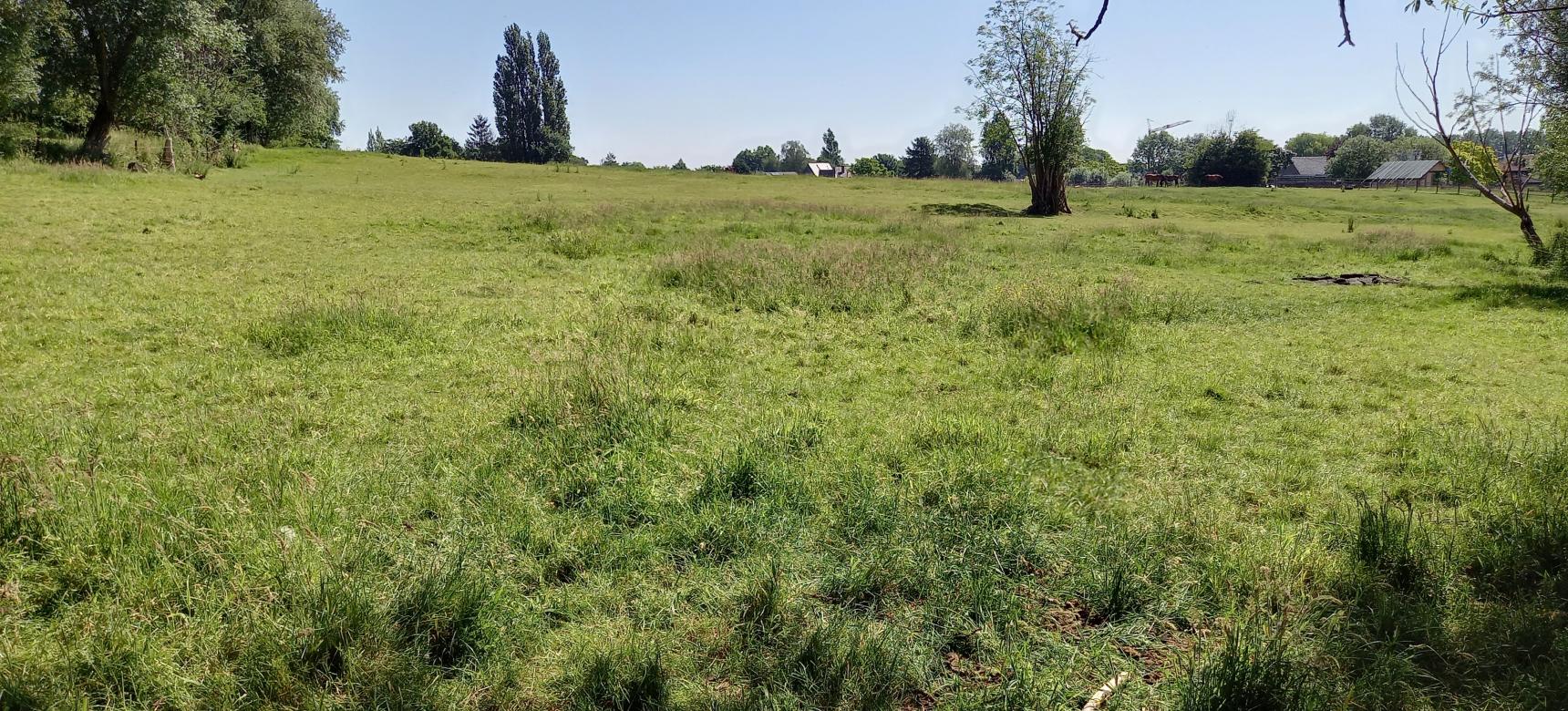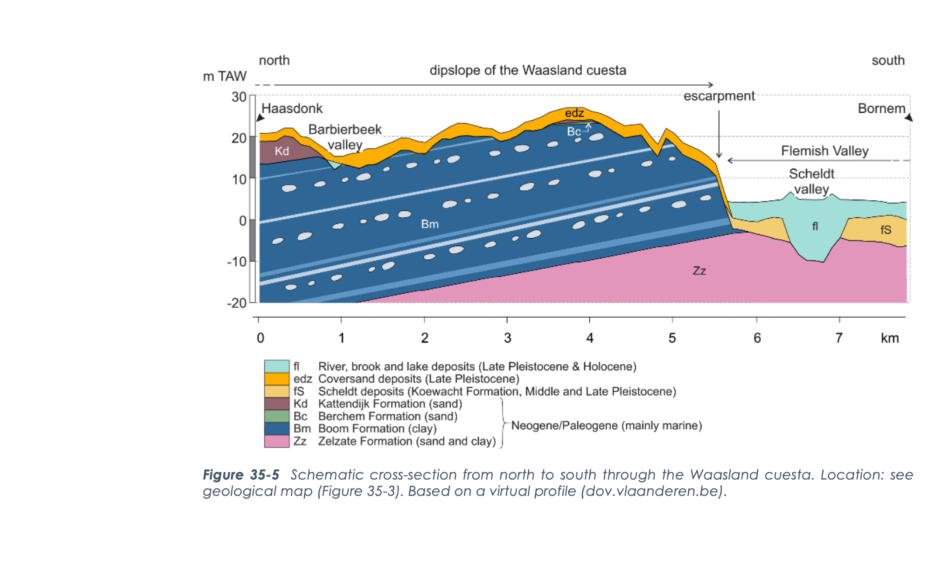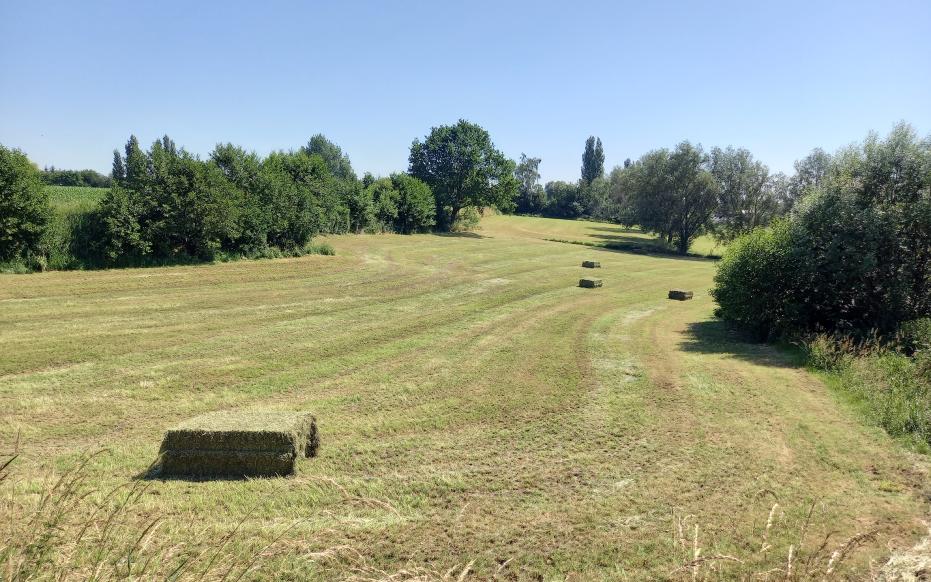Formation of a cuesta
A cuesta is an asymmetrical ridge and occurs when geologic layers become sloping and then do not erode at the same rate due to their different composition. The sloping layer that erodes at a slower rate remains partly as an elevation in the landscape. Where the softer layer is eroded, a steep slope emerges perpendicular to the hard layer: the cuesta front. Parallel to the sloping erosional layer, a softer slope forms: the cuesta ridge. The formation of the Waasland Cuesta started ca. 32 million years ago. Between c. 32 million and 30 million years ago, the sea in northern Belgium and the Netherlands was 50 to 150 m deep and deposited (Boom) clay (Boom Formation). Due to a combination of plate tectonics and climate fluctuations, the sea depth changed regularly during this period. As a result, the Boom Formation is not a homogeneous clay layer. It consists of alternating layers of silt, chalk and organic material. These layers form a characteristic pattern of horizontal light and dark gray bands.


